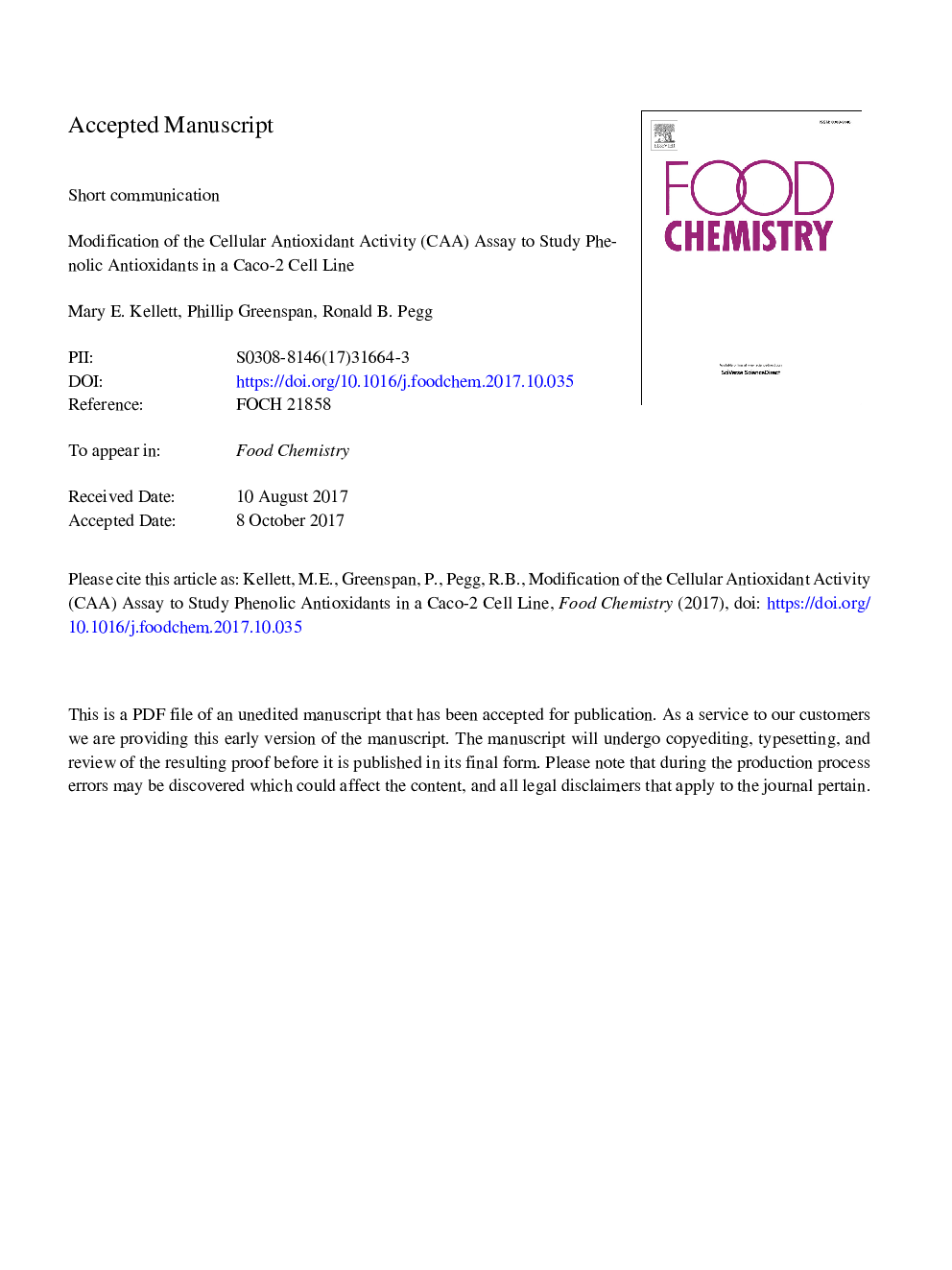| Article ID | Journal | Published Year | Pages | File Type |
|---|---|---|---|---|
| 7586493 | Food Chemistry | 2018 | 25 Pages |
Abstract
In vitro assays are widely used to analyze the antioxidant potential of compounds, but they cannot accurately predict antioxidant behavior in living systems. Cell-based assays, like the cellular antioxidant activity (CAA) assay, are gaining importance as they provide a biological perspective. When the CAA assay was employed to study phenolic antioxidants using hepatocarcinoma (HepG2) cells, quercetin showed antioxidant activity in HepG2 cells; 25 and 250 μM quercetin reduced fluorescence by 17.1 ± 0.9% and 58.6 ± 2.4%, respectively. (+)-Catechin, a phenolic antioxidant present in many foods, bestowed virtually no CAA in HepG2 cells. When Caco-2 cells were employed, more robust antioxidant activity was observed; 50 μM (+)-catechin and quercetin reduced fluorescence by 54.1 ± 1.4% and 63.6 ± 0.9%, respectively. Based on these results, likely due to differences in active membrane transport between the cell types, the Caco-2-based CAA assay appears to be a more appropriate method for the study of certain dietary phenolics.
Related Topics
Physical Sciences and Engineering
Chemistry
Analytical Chemistry
Authors
Mary E. Kellett, Phillip Greenspan, Ronald B. Pegg,
